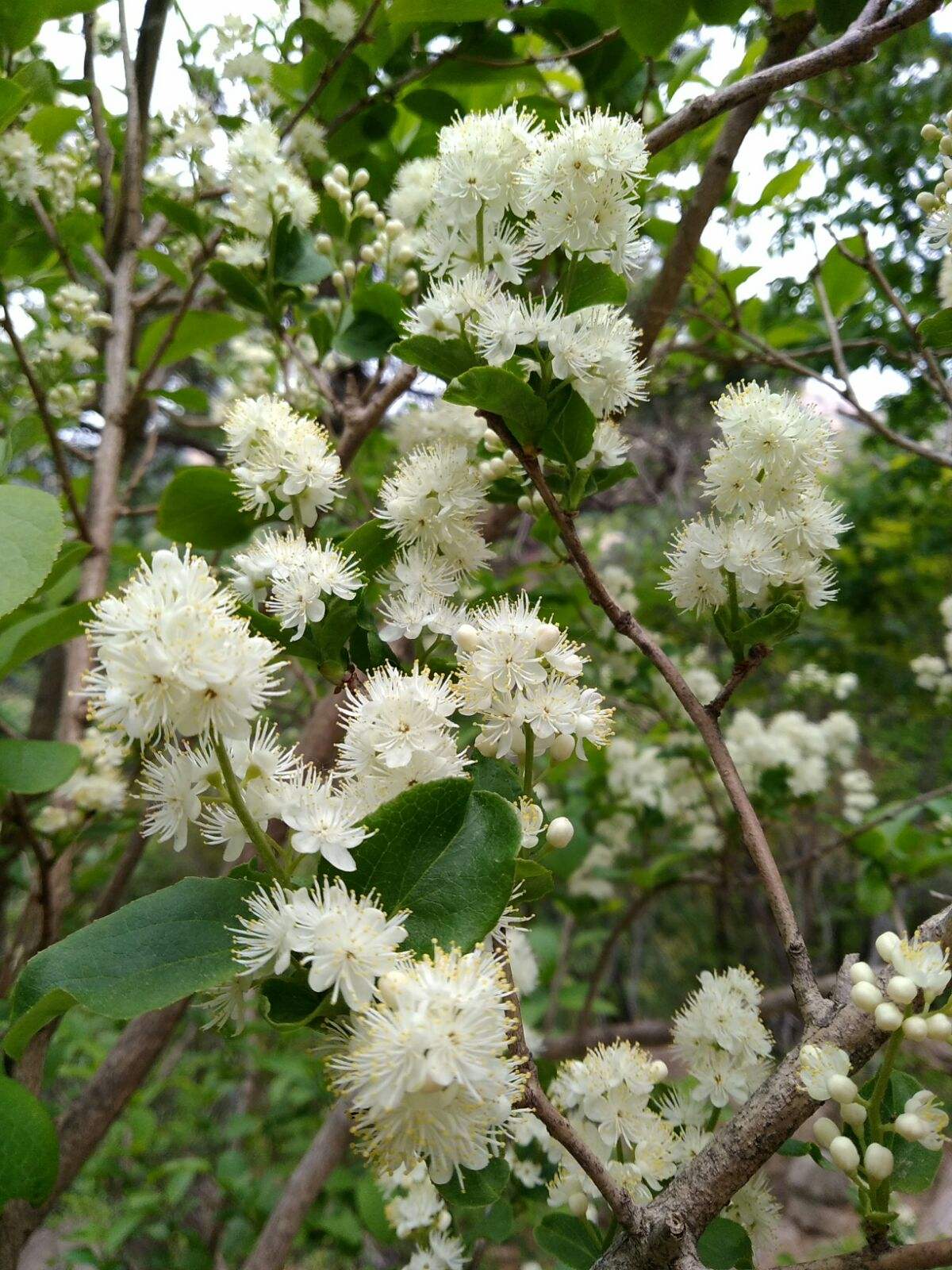Sapphire berry Shrub, Symplocos paniculata, Asiatic Sweetleaf
Perennial woody deciduous member of the Symplocos genus in the family Symplocaceae.
Hardy, Adaptable, Easy to Grow, Showy Fragrant Flowers, Attracts Birds, Wildlife Food/Shelter, Cold, Heat and Wind Tolerant
Grown for its 1/3 inch exquisite fruit in shades of turquoise or lapis lazuli, unlike any other ornamental; a mature tree covered with bright berries in the sun is extraordinarily beautiful.
Native to china, Japan and Himalayas, Sapphire Berry is a deciduous large multi-stemmed shrub or small low-branching tree typically growing 10 to 20 feet tall with a spreading habit. The bark on mature specimens has gray ridges and dark fissures. Foliage is ovate to obovate, finely toothed, dark green leaves to 3" long with no real fall color. Fragrant, cream-white flowers, 1/2 inch wide, are borne on 2 to 3 inch panicles in spring, on last year's wood. Fruit is a bright turquoise or sapphire blue, 1/3 inch wide drupe, ripening in fall. Birds are very attracted to the fruit. Problem free, easy to grow, not fussy as long as the soil is well drained. Not bothered by pests. An excellent plant for the back of the border, as a screen or small tree.
Other Names: Sapphireberry, Asiatic sweetleaf
- Native Range: Himilayas, eastern Asia, China and Japan
- Culture: Plant in groups of three or more to insure acceptable level of cross-pollination and resultant fruit production. Flowers on previous year's growth, but light, late winter pruning is still recommended even though some of the Flower buds will be removed.
- Uses: Best in groups in the shrub border or bird garden. Also effective as an unpruned screen.
Edible uses
Notes
Fruit
Material uses
We have no specific information for this species but many species in this genus contain alum and can be used as mordants when dyeing[8].
Wood - white, soft to moderately hard. close grained, liable to twist and split when seasoning. Of possible use in turnery[5][6].Medicinal uses(Warning!)
Unknown part
Ecology
Ecosystem niche/layer
Ecological Functions
Nothing listed.
Forage
Nothing listed.
Shelter
Nothing listed.
Propagation
Practical Plants is currently lacking information on propagation instructions of Symplocos paniculata. Help us fill in the blanks! Edit this page to add your knowledge.
Cultivation
Requires an acid soil and a sunny position. Succeeds in a sunny position in any well-drained fertile neutral to acid soil[12][3].
One report says that plants are hardy to about -10°c, though it is also said that they can survive quite harsh winters outdoors in Britain but that they need a warm, sunny protected position and a hot summer if they are to fruit well[10][3]. The fruits are sometimes spoiled by frosts[3]. The flowers are sweetly fragrant[3][13]. Self-sterile, it needs cross-pollination with a different plant in the same species if seed and fruit are to be produced[10][12].
Plants in this genus are notably resistant to honey fungus[3]



